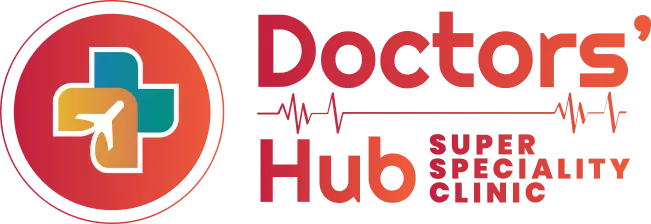Angina, or angina pectoris, is a medical condition marked by chest pain or discomfort caused by insufficient blood flow to the heart muscle, often due to coronary artery disease (CAD). This occurs when the coronary arteries narrow or become blocked, reducing oxygen supply to the heart. While angina is not considered a disease itself, it serves as a vital warning sign of underlying heart problems that require consultation with the best cardiologist in Delhi. Read this blog until the end to learn if your chest pain is a symptom of angina, its complications and when to seek treatment from any specialist.
Types of Angina
- Stable Angina: The most common form and happens during physical activity or emotional stress. It follows a predictable pattern, with symptoms that ease with rest or medicines. Episodes usually last a short time, often around five minutes or less, and are similar to previous occurrences.
- Unstable Angina: This one is more severe and unpredictable. It can occur at rest or with minimal activity and may not respond well to rest or medication. This often lasts longer than stable angina (frequently more than 20 minutes) and signals a higher risk of a heart attack, requiring urgent medical care.
- Variant (Prinzmetal) Angina: This type is also called Prinzmetal angina, results from spasms in the coronary arteries, temporarily reducing blood flow. This type occurs at rest, especially at night or early morning. Though it is rare, it can be very painful, but symptoms are usually relieved by medication.
How to Recognise Angina Symptoms
While it presents as chest discomfort, its symptoms can vary. Below are listed the common symptoms:
Common Signs and Symptoms are:
- Chest pain
- Radiating pain (left arm, jaw, shoulder, back)
- Shortness of breath
- Fatigue
- Nausea
- Sweating
- Dizziness
- Pressure
- Squeezing pain
- Stomach pain (in rare cases)
What Does Angina Pain Feel Like?
Angina feels like a sensation of pressure, tightness, or squeezing in the chest, often described as a heavy weight pressing on the heart. The discomfort may radiate to the shoulders, arms, neck, jaw, or back. The intensity of the angina pain can be different for everyone, and it may be accompanied by symptoms such as shortness of breath, sweating, or fatigue.
Is Angina Dangerous?
Angina is generally not life-threatening, but it can be dangerous if not treated. The problem is a key sign of heart disease—specifically coronary artery disease (CAD), which can ultimately cause catastrophic events such as heart attacks and heart failure. Individuals with unstable angina have an increased risk of having a myocardial infarction (heart attack).
When is Angina a Medical Emergency?
It becomes a medical emergency in following situations:
- If symptoms change abruptly or worsen.
- If it occurs while resting or with minimal physical effort.
- If the discomfort lasts longer than usual or does not improve with medicines such as nitroglycerin.
- In these cases, immediate medical attention from a cardiologist in Dwarka is important, as these signs may indicate an impending heart attack.
Complications of Untreated Angina
If chest discomfort is not treated, it can lead to serious problems and even medical emergencies sometimes, including:
- Heart Attack: A critical reduction in blood flow can cause permanent damage to the heart muscle.
- Heart Failure: It weaken the heart, reducing its ability to pump blood.
- Arrhythmias: Ongoing ischemia (lack of blood flow) can lead to irregular heart rhythms.
The Link Between Angina and Heart Disease
It is closely associated with coronary artery disease, a condition that narrows the coronary arteries and limits blood flow to the heart. Statistics show that around 30% of people with chest discomfort may experience a heart attack within five years if the condition is not managed correctly. In India, cardiovascular diseases account for about 28% of total deaths, underscoring the importance of early recognition and treatment of heart conditions to prevent serious complications.
Also learn about cholesterol remedies to prevent heart treatment.
How to Prevent Angina and Manage Symptoms
To prevent angina and reduce its symptoms, adopting a heart-healthy routine is necessary. Key strategies include:
- Quit Smoking: Stopping tobacco use lowers the risk of cardiovascular problems.
- Healthy Diet: Focus on consuming fruits, vegetables, moong dal chilla, and poha while reducing intake of saturated fats and high sodium.
- Regular Exercise: Engage in moderate aerobic activities for at least 150 minutes weekly to enhance heart health.
- Stress Reduction: Practise relaxation techniques such as meditation or deep breathing exercises to manage stress.
Angina, although a symptom rather than a disease, serves as a warning sign of underlying cardiovascular issues like coronary artery disease. Recognising its types lead to timely cardiology treatment in Delhi, reducing the risk of serious complications such as heart attacks or heart failure. If you experience chest pain or discomfort, do not ignore it—seek medical advice from reputed health centres like My Doctors Hub, located in Dwarka.














1 Comment
Feeling Common Cold with Cough? Consult a Doctor in Delhi now
[…] of Breath or Chest Pain: These symptoms should be evaluated immediately, as they may indicate a more severe infection or […]